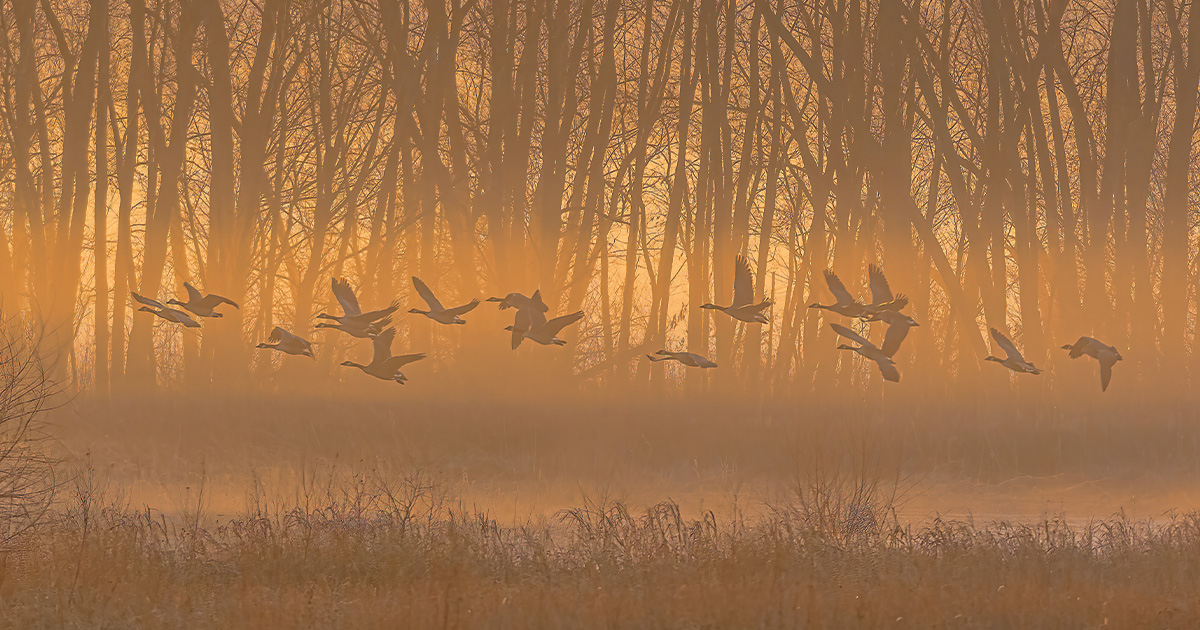Photo Essay: Fall is in the Air
A photographic tribute to the fall migration
A photographic tribute to the fall migration

Sunset by sunset, the days grow shorter. That’s one way they know. The subtle stirrings of October, on the prairie potholes and the Boreal fens and the wind-blown shores of tundra rivers, strike a deep remembrance, and they know: It is time to fly. Time to flee the snow and ice.

The ducks and geese leave by ones and twos and tens and twenties, but soon enough the feathered storms roll south like ocean waves. Boreas has spoken. Here they come.

High overhead, ducks and geese course in Vs and skeins and strings of confetti across the sky. Wads of teal shape-shift like puddles of ink. Canvasbacks beat the air with a hummingbird’s fervor. And then, suddenly, wings are stilled.

The birds slant toward the earth. Heads up, feet down, wings set, ducks and geese in autumnal descent have a curious effect on the human heartbeat: It quickens with anticipation, each beat an offering of gratitude for the gifts of the turning season.

In their multitudes, flocks of ducks and geese can overwhelm the senses—Canada geese with their cacophonous honks and cackles, the clatter of mallard wings as the greenheads rise, the whistling of pintails and wigeon.

But in the fall, the sight of even a single bird is magical. Drifting down from the clouds or loafing quietly on the water, a lone duck is both a promise made and a promise kept. They’re here. And more are coming.

Ducks Unlimited uses cookies to enhance your browsing experience, optimize site functionality, analyze traffic, and deliver personalized advertising through third parties. By continuing to use this site, you agree to our use of cookies. View Privacy Policy